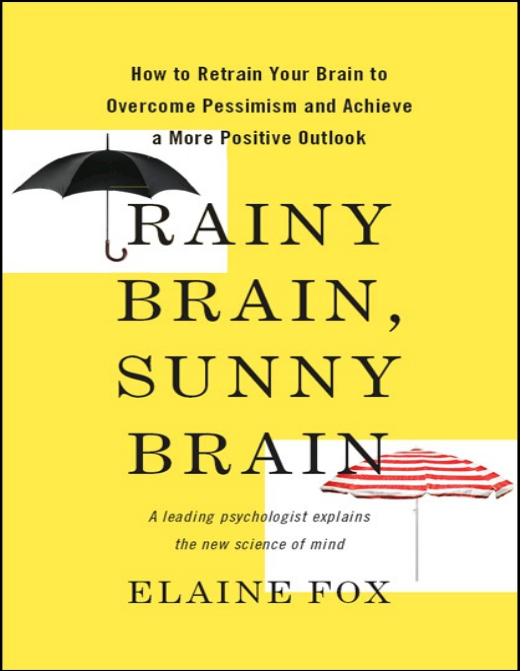Rainy Brain, Sunny Brain by Elaine Fox

Author:Elaine Fox
Language: eng
Format: epub, pdf
ISBN: 9780465029235
Publisher: Basic Books
FIGURE 5.1 Illustration of an auditory fear-conditioning procedure. Rats are habituated to the chamber on day 1 (no stimulation). On day 2, the rat receives a small number of training trials (typically 1–5) in which a tone CS is paired with a foot-shock US. Control animals receive unpaired presentations of the CS and the US. On day 3, the CS is presented in a novel chamber with a unique odor (peppermint), and fear response (freezing) to the CS is assessed. Animals that received a shock with the tone (paired) on day 2 show high levels of freezing, but animals receiving unpaired training show little freezing. Source: J. Johansen, Christopher Cain, Linnea Ostroff, and Joseph E. LeDoux, “Molecular Mechanisms of Fear Learning and Memory,” Cell 147 (2011): 509–524.
Interestingly, fear memories do not seem to be completely forgotten. Rather, extinction itself is an active learning process in which the new, safe memory supplants the old, fear memory. University of Vermont psychologist Mark Bouton conditioned rats to a tone in one chamber and then extinguished their fear responses in another. When the critical tone was presented again in the original chamber, the fear came rushing back. Even though it had been successfully extinguished elsewhere, the link with the original context was so strong that the fear was easily reinstated. The fear memory had not been erased; it was instead overlaid with a new memory.
Results like these explain how human fear can return suddenly in the most inappropriate situations. Remember my Northern Irish friend Sandra all those years ago? In spite of all the cues that she was safe, a fear association was instantly reinstated when she heard a car backfire. Even though she was in Dublin, not Belfast, and it was many years later, that primordial fear signal still had her diving for cover.
Neuroscience is starting to uncover the brain mechanisms that support this kind of fear learning and why it is so deeply embedded. It comes as no surprise that the amygdala, which is highly involved in the rainy brain, is also involved in how we learn to fear. Damage to even one tiny part of the amygdala—known as the basolateral nuclei—can severely disrupt fear learning. Should this region be surgically impaired in rats, the animals will no longer acquire a conditioned fear response. Their reaction to the electric shock itself remains perfectly normal, but no fear response to the associated tone develops. This shows us that in order to learn to be afraid, we need this tiny section of the amygdala.
Things get more complex when we examine research with fear conditioning in more detail. It turns out, for example, that the wider context in which fear learning takes place is also important. This is why a friend of mine can still remember the smell of the perfume her doctor was wearing when she was given the news that she had cancer. Even many years later, the scent of that perfume elicits unhappy, frightening memories.
Such contextual fear associations depend on a separate,
Download
This site does not store any files on its server. We only index and link to content provided by other sites. Please contact the content providers to delete copyright contents if any and email us, we'll remove relevant links or contents immediately.
Rewire Your Anxious Brain by Catherine M. Pittman(18592)
Talking to Strangers by Malcolm Gladwell(13293)
The Art of Thinking Clearly by Rolf Dobelli(10327)
Mindhunter: Inside the FBI's Elite Serial Crime Unit by John E. Douglas & Mark Olshaker(9265)
Becoming Supernatural by Dr. Joe Dispenza(8170)
Change Your Questions, Change Your Life by Marilee Adams(7688)
Nudge - Improving Decisions about Health, Wealth, and Happiness by Thaler Sunstein(7659)
The Road Less Traveled by M. Scott Peck(7557)
The Lost Art of Listening by Michael P. Nichols(7455)
Mastermind: How to Think Like Sherlock Holmes by Maria Konnikova(7280)
Enlightenment Now: The Case for Reason, Science, Humanism, and Progress by Steven Pinker(7274)
Win Bigly by Scott Adams(7141)
The Way of Zen by Alan W. Watts(6557)
Daring Greatly by Brene Brown(6475)
Big Magic: Creative Living Beyond Fear by Elizabeth Gilbert(5681)
Grit by Angela Duckworth(5557)
Ego Is the Enemy by Ryan Holiday(5350)
Men In Love by Nancy Friday(5194)
The Laws of Human Nature by Robert Greene(5083)
